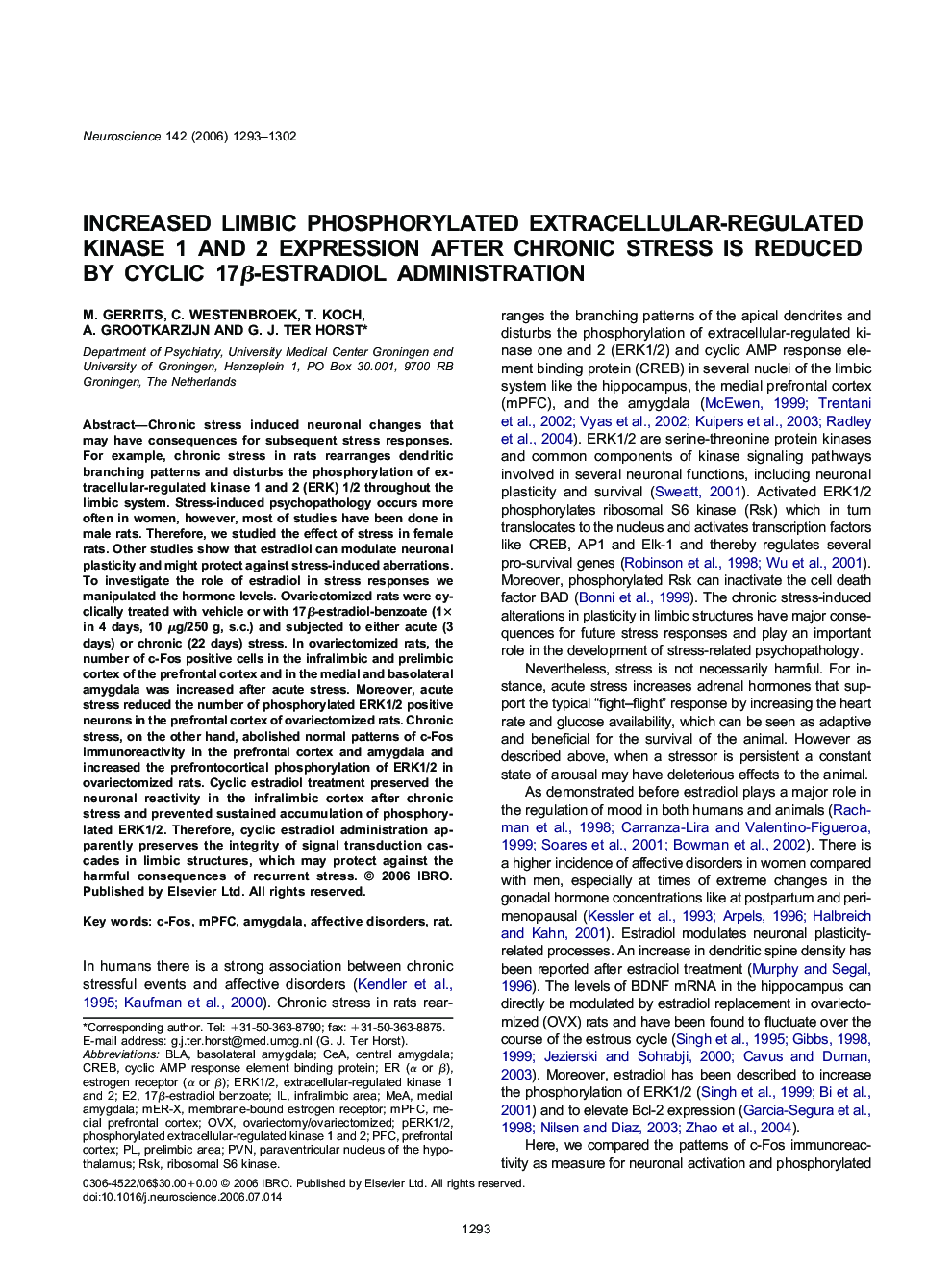| Article ID | Journal | Published Year | Pages | File Type |
|---|---|---|---|---|
| 4341584 | Neuroscience | 2006 | 10 Pages |
Chronic stress induced neuronal changes that may have consequences for subsequent stress responses. For example, chronic stress in rats rearranges dendritic branching patterns and disturbs the phosphorylation of extracellular-regulated kinase 1 and 2 (ERK) 1/2 throughout the limbic system. Stress-induced psychopathology occurs more often in women, however, most of studies have been done in male rats. Therefore, we studied the effect of stress in female rats. Other studies show that estradiol can modulate neuronal plasticity and might protect against stress-induced aberrations. To investigate the role of estradiol in stress responses we manipulated the hormone levels. Ovariectomized rats were cyclically treated with vehicle or with 17β-estradiol-benzoate (1× in 4 days, 10 μg/250 g, s.c.) and subjected to either acute (3 days) or chronic (22 days) stress. In ovariectomized rats, the number of c-Fos positive cells in the infralimbic and prelimbic cortex of the prefrontal cortex and in the medial and basolateral amygdala was increased after acute stress. Moreover, acute stress reduced the number of phosphorylated ERK1/2 positive neurons in the prefrontal cortex of ovariectomized rats. Chronic stress, on the other hand, abolished normal patterns of c-Fos immunoreactivity in the prefrontal cortex and amygdala and increased the prefrontocortical phosphorylation of ERK1/2 in ovariectomized rats. Cyclic estradiol treatment preserved the neuronal reactivity in the infralimbic cortex after chronic stress and prevented sustained accumulation of phosphorylated ERK1/2. Therefore, cyclic estradiol administration apparently preserves the integrity of signal transduction cascades in limbic structures, which may protect against the harmful consequences of recurrent stress.
